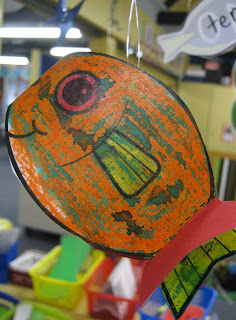A while ago I made fishing rods out of magnets and bamboo garden stakes. We have used them for fishing the felt-fish I made for maths (inspired by
this website). Because the fishing rods are incredibly popular and one wonderful mother was telling me about how much her son likes using them I was inspired to make some sight word fish too.
And here they are -
Sight Word Fishing.
Thanks
Sparklebox, I laminated my fish and used a split pin for the magnet on my fishing rod to stick to. Although I love the idea of having more felt-fish these fish only took a short time to make. (That's important because I am also busy writing reports.)
These fish support a variety of skills that we are learning at school. They can be used as an independent activity. The children can catch a fish and read the sight-word on it. It also takes coordination to catch the fish you want.
With a partner it encourages turn taking. Today we talked about how to play fairly when using the fish. The children had lots of ideas, they suggested that one person could catch all the fish, then it could be the next persons turn. Or catching one fish at a time, then giving the fishing rod to another person.
Today during
our reading wheel rotation I watched a group of children with this activity, they sat around a blue sheet from my dolls cot, which acted as the water with all of the fish spread out on it. They spent at least 5 minutes deciding how to play the activity fairly and making sure they took equal turns. I was pretty proud to see them thinking carefully about what we had discussed earlier.
I try to have a variety of reading and writing activities, and now that my class are mastering their alphabet knowledge I am keen to introduce some of the sight-words they need to know. Of the 100 high frequency sight-words that were available for these fish I chose about 20 words to print that I have found we are currently reading and writing most often.
Check out these posts about some of my other reading and writing activities:


























































